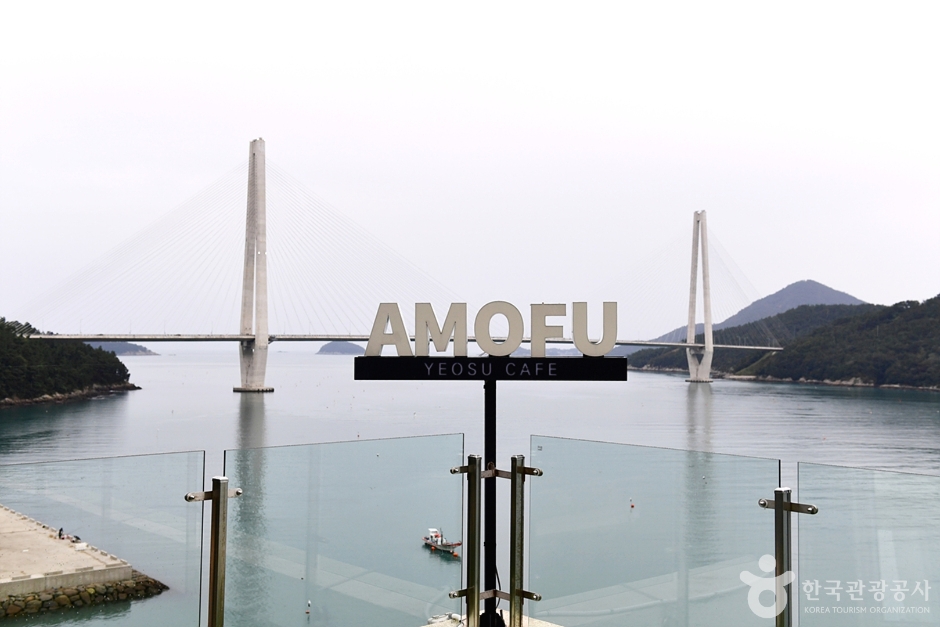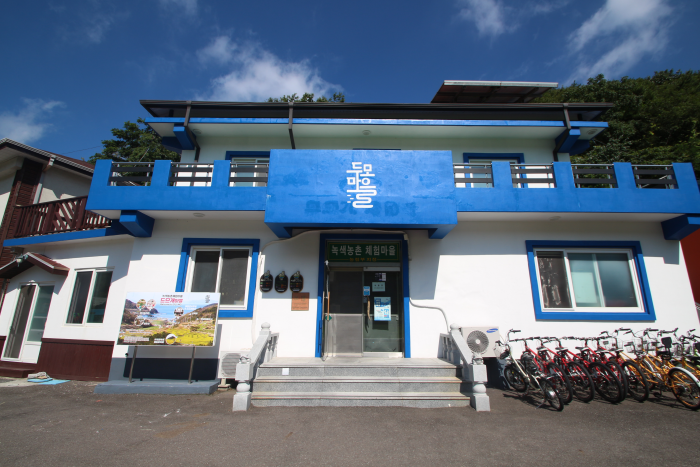Yongmunsa Temple (Namhae) (용문사(남해))
17.8Km 2024-02-23
166-11 Yongmunsa-gil, Idong-myeon, Namhae-gun, Gyeongsangnam-do
Yongmunsa Temple, located on Hogusan Mountain in Namhae, was established in 802. It derived its name from being built above a pond where a dragon was believed to reside. The temple provides a temple stay program, allowing visitors to immerse themselves in tranquility for both body and mind. Renowned as a picturesque destination for autumn foliage, it attracts a multitude of tourists during the fall season.
AMOFU (아모푸)
17.9Km 2024-02-20
43 Hwaseo-ro, Hwayang-myeon, Yeosu-si, Jeollanam-do
Amoofu is a large café located near Hwayangdaegyo Bridge, connecting Yeosu and Goheung. It specializes in specialty coffee, allowing customers to choose their beans according to their preferences, with the flavorful longblack being a signature menu item. The first floor features a spacious outdoor terrace, the second floor offers large windows overlooking the sea, and the third floor has a rooftop where visitors can relax while enjoying the beautiful view of Namhae sea.
Nodo Island (Kim Manjung Historic Site) (노도(김만중유허지))
18.6Km 2024-02-23
1-1 Nodo-gil, Sangju-myeon, Namhae-gun, Gyeongsangnam-do
Nodo Island, where Kim Manjung, a scholar-official during the Joseon dynasty, spent three years in exile amid factional conflicts, preserves the remnants of his thatched house, a memorial stone, and a well. The island stands as a testament to its historical significance. Named "Nodo" for its historical association with the production of numerous oars, it is also known as Satgatseom Island, named for its resemblance to a Satgat. Blending captivating natural scenery with Kim Manjung's literary legacy, the island features the Seopo Literature Museum, a Folk Museum, and an Ecological Pond.
Dumo Village (두모마을)
19.9Km 2020-07-31
18, Yanga-ro 533beon-gil, Namhae-gun, Gyeongsangnam-do
+82-88-862-5865
Dumo Village was designated a Green Agriculture Experience Village in 2005. The stream flowing through the village has high-quality water and is home to sweetfish, mitten crab, and freshwater eel. Visitors to the village can enjoy both farming and marine experiences, making it a popular destination for families. The villagers welcome visitors warmheartedly, creating an atmosphere of returning home after a long time away. The village name comes from the way it seems to hug the ocean, like a large hangari (clay pot).



 English
English
 한국어
한국어 日本語
日本語 中文(简体)
中文(简体) Deutsch
Deutsch Français
Français Español
Español Русский
Русский